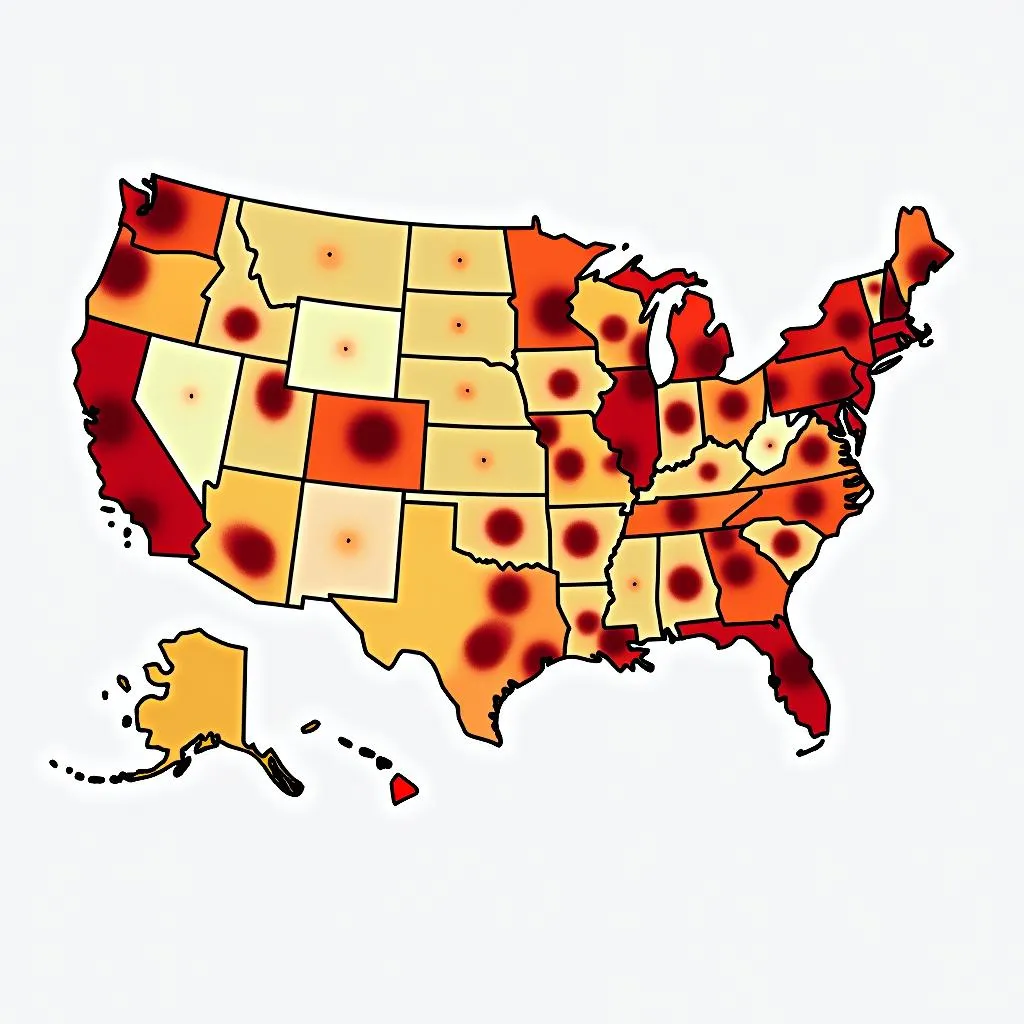African Americans by State: A Diverse Demographic Landscape
African Americans constitute a significant and diverse population across the United States, with their presence deeply interwoven into the social, cultural, and economic fabric of the nation. Understanding the distribution of African Americans By State provides valuable insights into historical migration patterns, cultural influences, and contemporary demographic trends.
 African American Population Map of the United States
African American Population Map of the United States
Factors Shaping the Distribution
The distribution of African Americans across the US is not uniform and reflects the impact of historical events and socioeconomic factors. The transatlantic slave trade played a pivotal role in shaping the early settlement patterns, with Southern states witnessing a higher concentration of African Americans due to the prevalence of plantation agriculture.
The Great Migration
The Great Migration, spanning from the early 20th century to the late 1960s, witnessed a massive movement of African Americans from the rural South to the urban North and West. This migration was driven by the search for better economic opportunities, escape from Jim Crow segregation, and aspirations for improved social mobility.
Post-Civil Rights Movement Shifts
Following the Civil Rights Movement, demographic shifts continued, with some African Americans returning to the South, particularly to states like Texas, Georgia, and Florida. Factors influencing this reverse migration include economic growth in the South, closer family ties, and a desire to reconnect with cultural roots.
Regional Variations and Cultural Expressions
The geographical distribution of African Americans has resulted in distinct regional variations in cultural expressions, traditions, and community dynamics.
The South
The South holds deep historical and cultural significance for African Americans, shaping their music, food, and religious practices. From the soulful rhythms of blues and jazz in cities like New Orleans and Memphis to the rich culinary heritage of soul food, the South’s influence on African American culture is undeniable.
The North
The North, particularly cities like Chicago, Detroit, and New York, became centers of Black cultural and intellectual life during the Harlem Renaissance. This period witnessed a flourishing of African American art, literature, and music, challenging racial stereotypes and fostering a sense of Black identity and pride.
 Celebrating African American Culture at a Vibrant Community Event
Celebrating African American Culture at a Vibrant Community Event
Contemporary Demographics and Socioeconomic Indicators
Examining contemporary demographic data reveals insightful trends in the distribution and socioeconomic status of African Americans across different states.
Population Density
States with historically large African American populations, such as Mississippi, Louisiana, and Georgia, continue to have a high concentration. However, states that experienced significant in-migration during the Great Migration, such as Illinois, New York, and California, also have substantial African American communities.
Socioeconomic Factors
Despite advancements in civil rights and social justice, disparities in socioeconomic indicators persist. Factors such as access to quality education, healthcare, and employment opportunities continue to influence the overall well-being of African American communities across different states.
Conclusion
Understanding the distribution of African Americans by state provides a nuanced perspective on the complex interplay of history, culture, and socioeconomic factors that have shaped the African American experience in the United States. By acknowledging these diverse experiences and addressing existing disparities, we can strive towards a more equitable and inclusive society for all.

